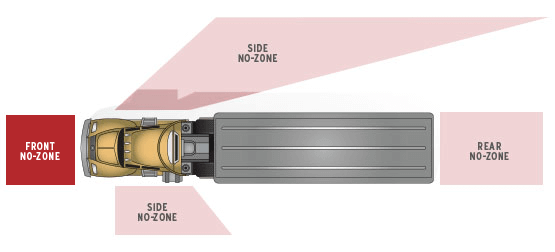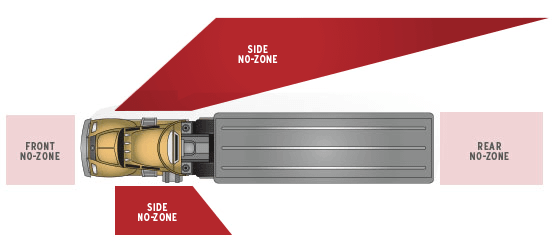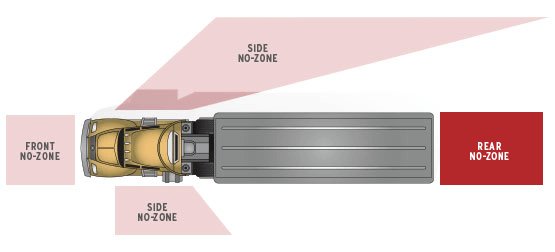Due to their size and height, semi trucks and buses have several large blind spots where a car or small truck will virtually “disappear” from a truck driver’s view. The four areas drivers should avoid are the front, rear and both sides of the tractor to the front of the trailer. Traveling in these areas will greatly increase the potential for you getting into a crash.
RULE OF THUMB: LOOK FOR THE DRIVER’S FACEIt can be tricky to know if you are in a blind spot or not, but there is one way to know for sure. If you can see the truck driver’s face in their side mirrors, then the driver can see you, and you know you are not in a blind spot. However, if you cannot see the truck driver’s face in the side mirrors, then they have no idea that you are there driving next to or behind them. Always make sure that you can see the driver’s face.
Front No-Zone: Don’t Ever Cut Off a Truck
Cutting in front of a truck as you would a car may be the last mistake you ever make. The front No-Zone area extends nearly 20 feet ahead of the truck. It’s even safer if a driver is farther away from the front.

Side No-Zones:
Trucks have extremely large blind spots on both sides of the tractor, and the front part of the trailer. These blind spots then angle out from the truck. Driving your vehicle in these blind areas can put you into a dangerous situation where you can be sideswiped by a truck that can’t see you.

Rear No-Zone:
Truck drivers have no rear-view mirror to look through, so they have to rely heavily on their side-view mirrors. This blind spot extends nearly 200 feet from the back of the truck. Driving in this area also blocks your vision of what’s ahead and decreases your reaction time if a truck stops suddenly.

Trucks Don’t Have Rear-view Mirrors
Truck mirrors can be as tall as 25 inches. They can also have cameras installed, but it doesn’t mean the driver can see everything around them, especially if you are driving in a No-Zone area.
